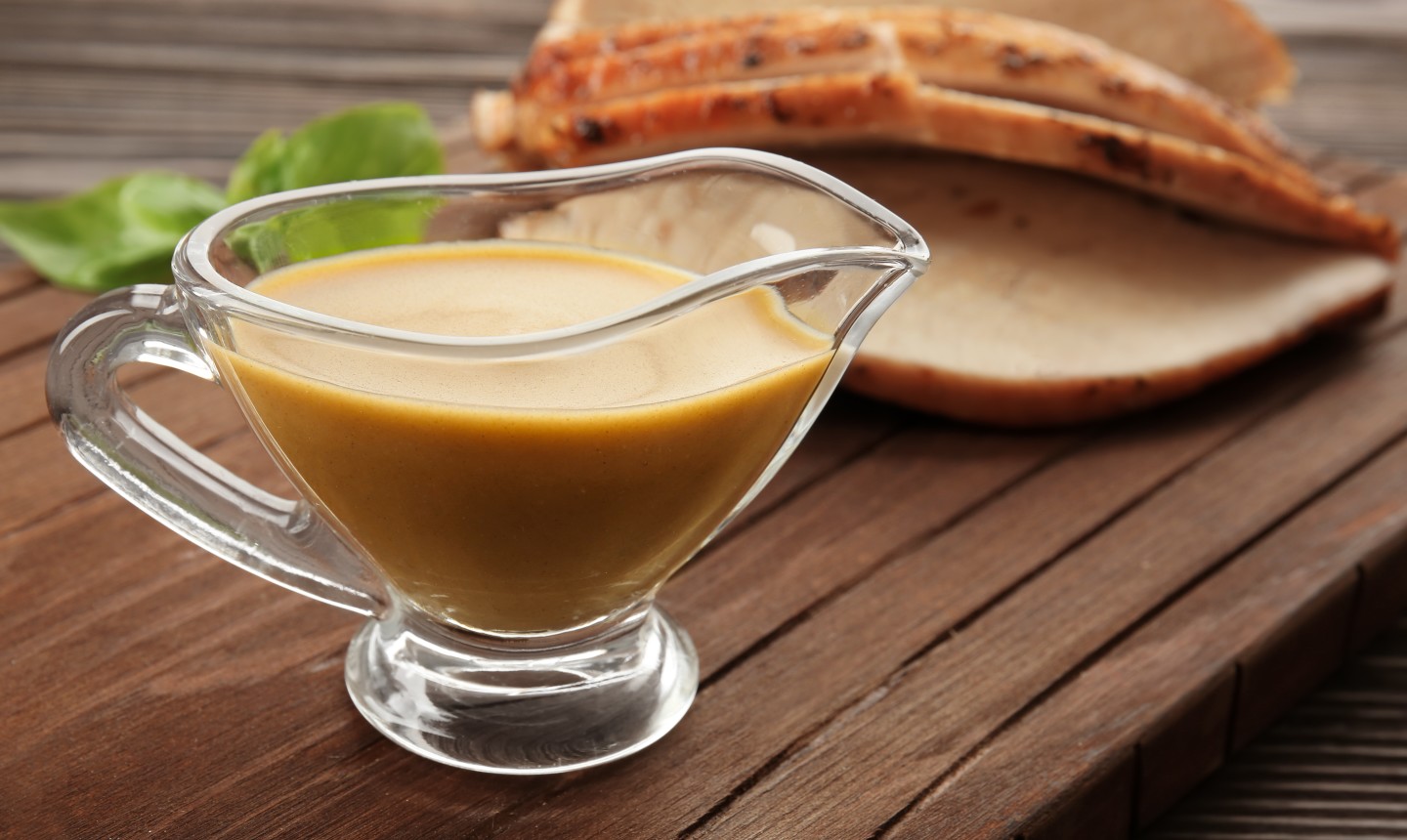
Gravy is to turkey as frosting is to cake. As coffee is to donuts. As leggings and knit hats are to autumn days. Neither is really complete without the other. Get the picture? Although the turkey is often thought of as the Thanksgiving centerpiece, a good gravy is actually your secret weapon.
Real talk: if you want great gravy, you’ve gotta make an old-fashioned, from-scratch broth beforehand. And that means making friends with your butcher to get some turkey necks (don’t be shy!). This recipe, adapted from our class Homestyle Pan Sauces, tells you everything you need to know.
Light Turkey Broth
Yield: 4 quarts
Ingredients
Instructions
1. Put the turkey necks, celery, onion and water in a large pot over high heat and bring to a boil. Immediately reduce the heat to a low simmer and cook, uncovered, for 2½ to 3½ hours.
2. As foam develops on the surface, skim it off. If you want to retrieve the turkey meat while it still has some flavor, use tongs to pull out the necks after about 2 hours. Pick off the meat and then return the bones to the pot. (This step is optional — feel free to just let the necks simmer away, meat and all, the whole time.)
3. The broth is ready when it has a good, rich flavor. Remove the pot from the heat and pour the broth through a fine-mesh sieve placed over a clean container. Let sit for at least 30 minutes, then spoon off any accumulated fat. You should have about 4 quarts of broth, which you can cool thoroughly and store in the fridge for 2 days. For longer storage, freeze, then thaw completely on turkey day.
Homestyle Gravy
Ingredients
Instructions
1. After transferring your turkey to its carving board, carefully pour all the juices and fat from the roasting pan into a gravy separator or tall measuring cup. Be sure to pour gently so the fat and juices don’t mix together. Let the liquid settle for 5 minutes, then remove the fat from the top (either with a spoon or turkey baster), and set the flavorful liquid aside. Reserve the fat in a separate container.
2. Place the roasting pan on a burner (or two) over medium heat. Add about ¼ cup of the fat to the pan, then add the flour and stir to make a smooth paste (aka roux). Take care to scrape up any brown bits and move the pan around to avoid overheating one spot.
3. Reduce the heat to low and cook the roux, stirring and scraping to prevent it from burning. Cook 1 to 2 minutes, until the roux is light golden brown.
4. Whisking rapidly, gradually pour in the broth that you prepared in advance. If the mixture starts to get lumpy, whisk vigorously and hold off on adding more liquid for a few seconds until everything is smooth, then carry on slowly. Continue pouring and whisking until you have only about 3/4 cup of the broth left (set this aside for later). Now give the bottom of the pan a good scrape to make sure all the flavorful brown bits on the bottom of the pan are released.
If you end up with a few lumps, don’t worry. You can continue to whisk them out as you finish flavoring the gravy, and you can even strain them out at the end if needed, and no one will know the difference.
5. Add the reserved pan juices (make sure you’ve skimmed away as much fat as you can first), and simmer the gravy for another minute. If the gravy is a bit thick, add your reserved broth, or even some water if you’re in a pinch. If it is too thin, you can make a slurry of melted butter and flour, whisk it in, and simmer for a minute or two to thicken.
6. Adjust the taste with salt and pepper as needed. If the gravy needs a little lift, add a few drops of lemon juice or Cognac. If the flavor is still weak, simmer a few more minutes to concentrate it.
If the situation is dire, add some canned chicken broth and reduce the gravy more, or even add pinch of powdered chicken bouillon. (Don’t feel bad if you have to “cheat.” A lot depends on the flavor of the turkey itself, and we can’t control that!)
7. If the gravy needs straining, do that now. Finish with a handful of chopped fresh herbs (we like thyme and tarragon). By this point, your turkey should be done resting, ready to carve, and perfectly primed for that good, good gravy.

What have you got for a good mushroom gravy?
Sounds just like my Mama used to make it. God rest her soul 06/24/2021. This will be my first Thanksgiving without her. ❤️🥲